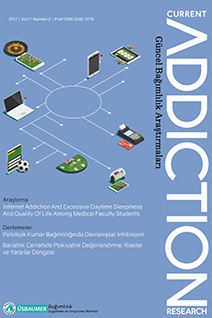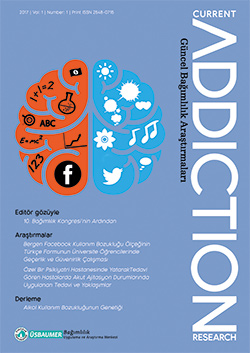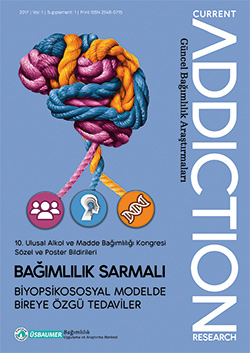Years
2025
2024
2023
2022
2021
2020
2019
2018
2017
Categories
Authors
- ALEJANDRO BORREGO-RUIZ (1)
- AYŞEGÜL DUMAN (1)
- Abdullah TÜRKMEN (1)
- Ahmet Tamer AKER (1)
- Ahmet Yılmaz (1)
- Ahmet Üzer (1)
- Ali Yasin Kafes (1)
- Ali Yücel GÜLER (1)
- Alptekin ÇETİN (1)
- Alptekin Çetin (1)
- Altunışık Toplu Sibel (1)
- Aslı Enez Darçın (1)
- Aslı Kayacan (1)
- Aslı Zeynep Başabak Bhais (1)
- Aslıhan Polat (1)
- Aybüke Kaplan (1)
- Ayşegül Tosuner (1)
- Azize TÜRKOĞLU (1)
- Başak Ünübol (1)
- Berhudan Şamar (1)
- Beyza Yaz (1)
- Birgul Kekliltepe (1)
- Birgül CUMURCU Hatice (1)
- Birgül Cumurcu Hatice (1)
- Bolat Kaya Özlem (1)
- Burcu YÜCETÜRK (1)
- Bülent COŞKUN (1)
- Caner ASLAN (1)
- Cemal Onur NOYAN (4)
- Cemal Onur Noyan (4)
- Ceren GÜNGÖR (1)
- Ceyda ŞİŞMAN ÜNLÜ (1)
- Ceylan Ergül Arslan (2)
- Cihat Paltun Salih (1)
- DURMUŞ ELİF (1)
- Davut Genç (1)
- Deniz Doğan (1)
- Deniz Eryılmaz (1)
- Derya Gündüz Hoşgör (1)
- Didem Beşikçi Keleş (1)
- Dilan Erkan (1)
- Duygu KILIÇ ÖZTAN (1)
- EMLU HAKAN (1)
- Eda Deligöz (1)
- Ekin Sönmez Güngör (1)
- Elif Mutlu (1)
- Erkal ERZİNCAN (1)
- Erkal Erzincan (2)
- Erol Göka (1)
- Fagan Zakirov (1)
- Fatma Betül Esen (1)
- Fatma Eren (2)
- Feyza ÇELİK (1)
- Filiz Özsoy (1)
- FİDAN ENİSE KÜBRA (1)
- Gizem Akülker (1)
- Gul Eryılmaz (1)
- Gökben Hızlı Sayar (3)
- Gül ERYILMAZ (4)
- Gül Eryılmaz (2)
- Gürler GÜZ (1)
- Gürler Güz (1)
- HANDE TUĞÇE DEMİRCİ (1)
- HATİCE OKSAL (1)
- Habib Erensoy (1)
- Hasan Kaya (4)
- Hasan Mervan Aytaç (1)
- Hatice Turan (2)
- Hatice Özyıldız Güz (1)
- Haydar Hoşgör (1)
- Hüseyin Ünübol (2)
- HİLAL ÇERKEZOĞLU (1)
- Hızlı Sayar Gökben (1)
- Işıl Gogcegoz (2)
- Işıl GÖĞCEGÖZ (1)
- Işıl Göğcegöz (2)
- KABA AYŞE (1)
- KABA FATİH (1)
- KARABURUN MERVE (1)
- Kursad Nuri Baydili (1)
- Lütfiye Nur Akkoç Arabacı (1)
- Melike Yerebakan Tüzer (1)
- Merve Metin (1)
- Meryem Zeynep Uğurlu (1)
- Mine Ergelen (1)
- Murat Yalçın (1)
- Mustafa AKAN (1)
- Mustafa Akan (1)
- Müberra Kulu (1)
- Nermin GÜNDÜZ (2)
- Nermin Gündüz (2)
- Nesrin Dilbaz (5)
- Nevzat Tarhan (1)
- Nilüfer SAATCİOĞLU TINKIR (2)
- Nisanur Sarıgül (1)
- Nuran Korkmaz (1)
- Onur Gökçen (1)
- Rüstem Mustafaoğlu (1)
- SALİH GÜLEN (1)
- Salih Cihat Paltun (1)
- Sedef KOÇ BAL (1)
- Selami Ülker (1)
- Sema AKKOYUN (1)
- Serdar Nurmedov (2)
- Sever Yıldırım (1)
- Sevinç Sütlü (1)
- Simge ALEVSAÇANLAR CÜCÜ (2)
- Sümeyra Bilgiç (1)
- Tijen Acar (1)
- Tijen ŞENGEZER (1)
- Tijen Şengezer (1)
- Tonguç Demir Berkol (1)
- Tuba Öcek Baş (1)
- Tuğba Yılmaz (1)
- Türker Tekin Ergüzel (1)
- Yasin Hasan Balcıoğlu (1)
- Zakirov Fagan (1)
- Zehra Arıkan (1)
- Zeynep Ülke (1)
- Zeynep Şahin (1)
- Zühal Albayrak (1)
- Çağrı Yalçın Çınar (1)
- Çelik Hüseyin (1)
- Çetin Alptekin (1)
- ÖMER BÜBER (1)
- ÖZKAN EZGİ (1)
- Özge Kutlu (1)
- Özge Nur Kutluer (1)
- Özge Timur (1)
- Özlem Bolat Kaya (1)
- İrem Teke Bulut (1)
- Şafak Yalçın Şahiner (1)
- Şule DOYAROĞLU (1)
ARTICLES
Review Article
Simge ALEVSAÇANLAR CÜCÜ
2020, 4(2), s:54-62
Original Article
Habib Erensoy,Tonguç Demir Berkol,Yasin Hasan Balcıoğlu,Hasan Mervan Aytaç
2020, 4(1), s:5-15
Objective: Comorbidity of substance use disorders and other psychiatric disorders is common. However, data on the prevalence of substance use disorders in general psychiatric outpatient population is rather scarce.
Method: In order to investigate the prevalence of substance use disorders among the patients who admitted to the general psychiatric outpatient unit and followed with any psychiatric diagnosis, 734 consecutive adult patients were included in this study. Michigan Alcoholism Screening Test–AD was administered to these patients. Substance screening form and SCID-I dependence module were administered to 47 patients (6.4%) who had a MAST-AD score above 4. Later, SCID-II and the rest of SCID-I were administered to 33 patients (4.5%) who met any diagnostic criteria on this module.
Results: From these 734 patients, 33 (4.5%) had alcohol or substance use disorder: Five patients (0.7%) had alcohol dependence, 26 patients (3.5%) had alcohol abuse and 3 patients (0.4%) had multiple substance dependence. There were 9 patients (1.2%) with cannabis abuse, 4 patients (0.5%) with ecstasy abuse, 1 patient (0.1%) with heroin abuse, 1 patient with (0.1%) biperiden abuse and 9 patients (1.2%) with benzodiazepin abuse. From this 33 patients, 7 (1.0%) patients were diagnosed with borderline personality disorder, 2 (0.3%) with antisocial personality disorder, 1 patient (0.1%) with paranoid personality disorder, 1 patient (0.1%) with narcissistic personality disorder, 2 patients (0.3%) with avoidant personality disorder, 1 patient (0.1%) with schizoid personality disorder and 1 patient (0.1%) with dependent personality disorder. With SCID-I, we found 5 (0.7%) major depressive disorder, 3 (0.4%) bipolar I, 1 (0.1%) distimic disorder, 2 (0.3%) paranoid schizophrenia, 1 (0.1%) delusional disorder, 3 (0.4%) generalized anxiety disorder, 3 (0.4%) panic disorder, 1 (0.1%) panic disorder with agoraphobia, 1 (0.1%) anxiety disorder not otherwise specified, 1 (0.1%) social phobia and 1 (0.1%) post-traumatic stress disorder.
Conclusion: These results suggest that substance use disorders are not prevalent among general psychiatric outpatients. Substance use disorders should be carefully assessed in patients with diagnoses of mood disorders, anxiety disorders or personality disorders.
Original Article
Evaluation of the Factors Predicting Risky Alcohol Use in University Students
Deniz Eryılmaz,Işıl Gogcegoz,Gul Eryılmaz
2020, 4(1), s:16-20
problem in terms of mental health of the individuals and society. Substance use disorder has been evaluted as a disease by the World Health Organization (DSÖ) from 1951. In terms of alcohol consumption Turkey 4.7% of all deaths in men with prevention of alcohol consumption is predicted of 3.1% of all deaths in women could be prevented. When we analyzed the alcohol consumption in Turkey it’s thought that 4.7% of male deaths, and 3.1% of female deaths could be prevented through prevention of alcohol consumption. Risky alcohol use can be defined as the consumption of alcohol at the risk of harm in physical, mental or social areas. Participants of this study are the students at Üsküdar University in the 2018-2019 academic year. The Alcohol Use Disorders Identification Test was used to determine the alcohol use levels of the participants and to determine the risky alcohol use. According to the results of this study, the rate of individuals who have risky alcohol use is 6.3%. Risky alcohol use has become an important public health problem in terms of mental health of individuals and society.
Original Article
Assessment of University Students' Perspectives On Smokeless Campus Policy
Birgul Kekliltepe,Işıl Gogcegoz
2020, 4(1), s:21-27
The cigarette is an addictive substance being used worldwide and one of the largest risk factors for health. Due to the different substances in the cigarette, smoking can cause different diseases from skin problems to cancer. It`s the biggest cause of preventable illness and deaths in almost every country in the world. In the most developed contries many studies are done against smoking. In the last few years studies on smoking are done in our country too. One of the important examples we gave to the while world is a prohibition of smoking in public places. Tobacco free public places means that all indoor workplaces and indoor public places should be completely smokefree. Cigarette smoking is very common among college students. Many studies are made to prevent this establishing campus-wide tobacco/smoke-free environments. The main aim of this study is to evaluate the perspective of Üsküdar University students on smokeless campus policy. 414 students participated in the study. The study was based on 3 different test which were provided to all participants; Sociodemographic form, Smokeless Places Assessment Form and Fagerstrom Test for Nicotine Dependence. The analysis has shown that non smokers give more support to Smokeless Campus policy than the smokers. It was determined that the level of addiction did not cause statistically significant differences. Keywords:
Case Report
Multidisciplinary Approach to Naltrexon Implant Related Local Complications: Case Report
Mustafa Akan,Altunışık Toplu Sibel,Birgül Cumurcu Hatice
2020, 4(1), s:28-34
Case Report
Müberra Kulu,Filiz Özsoy
2020, 4(1), s:35-39
The association of alcohol /substance use disorder and attention deficit hyperactivity disorder (ADHD) is a frequently reported condition. The comorbidity of these two diseases both compromises treatment compliance and increases mortality and morbidity rates. The medical treatments used in ADHD treatment are also very limited due to their potential for abuse. In this case report, the regression of attention deficit symptoms and improvement in the neuropsychometric tests due to atomoxetine treatment in opiate use disorder patient will be presented.
Mini - Review
Tijen Şengezer
2019, 3(2), s:49-82
Review Article
Rüstem Mustafaoğlu
2019, 3(1), s:5-10
e-Sports become a part of our modern sport as it has entered our agenda in recent years, its popularity has increased rapidly and its mass of followers consists of young generation has reached a huge budget. In this review, the definition of e-Sport, historical development process, place in the world and our country, the spiritual and physical positive and negative effects on the individuals has been mentioned. Finally, it was mentioned about ergonomic changes and practical exercise suggestions to prevent possible musculoskeletal problems in e-Sport players. Scientific studies about e-Sports in Turkey is limited compared to other countries. With this study, it is aimed to eliminate the lack of Turkish resources related to this field which is developing day by day, to share the findings with the related health professionals and to contribute to the literature.
Original Article
Comparison of the Attachment Styles of Cigarette Smokers and Nonsmokers
Beyza Yaz,Hüseyin Ünübol,Gökben Hızlı Sayar
2019, 3(1), s:11-15
Aim: This study aimed to compare the attachment styles of smokers and nonsmokers.
Methods: 2800 individuals who participated in the study were given sociodemographic form and “Experiences in Close Relationships Scale”.
Results: Younger ages, male sex, low educational levels found to be related to smoking status. However smoking status or the number of daily smoked cigarettes not found to be related to attachment style.
Conclusion: According to the results of the study, attachment styles were not significantly different according to smoking status. The results of this study suggest that the other comorbid psychopathologies might be a more important risk factor than attachment style in smoking.
Original Article
Haydar Hoşgör,Derya Gündüz Hoşgör
2019, 3(1), s:16-24
Objective: The aim of this study is to examine the effect of the fear of missing out on the nomophobia, and to determine whether differences between these variables and demographic features.
Method: In accordance with this purpose, the students who were studying at the Department of Health Management in 2017-2018 autumn semester at universities in Istanbul were included in this study and data of 273 respondent were evaluated. Personal information form and FoMO and Nomophobia scales were used for data collection. Descriptive statistics, t-test, correlation and regression analyses were used in the data analysis.
Results: According to the analysis outcomes, the levels of nomophobia and FoMO of the students are above average. The results of the study demonstrate that there is a significant relation at a moderate level and positive direct relationship between nomophobia and fear of missing out, as well as the fear of missing out explains 30% of nomophobia. Also, the results show that there are statistically significant differences between students’ levels of nomophobia and fear of missing out, and their demographic features. Moreover, these differences are stem from students who control his smartphone at least 33 times a day, carry a continuous charger, control his smartphone as soon as waking up, connect to the social media via the smartphone.
Conclusion: It has been concluded that for future healthcare manager candidates, the fear of missing out on social networks is a predictor of nomophobia, also known as the fear of being deprived of the smartphone.



 2. Sayı
2. Sayı
 1. Sayı
1. Sayı
 Ek Sayı
Ek Sayı







